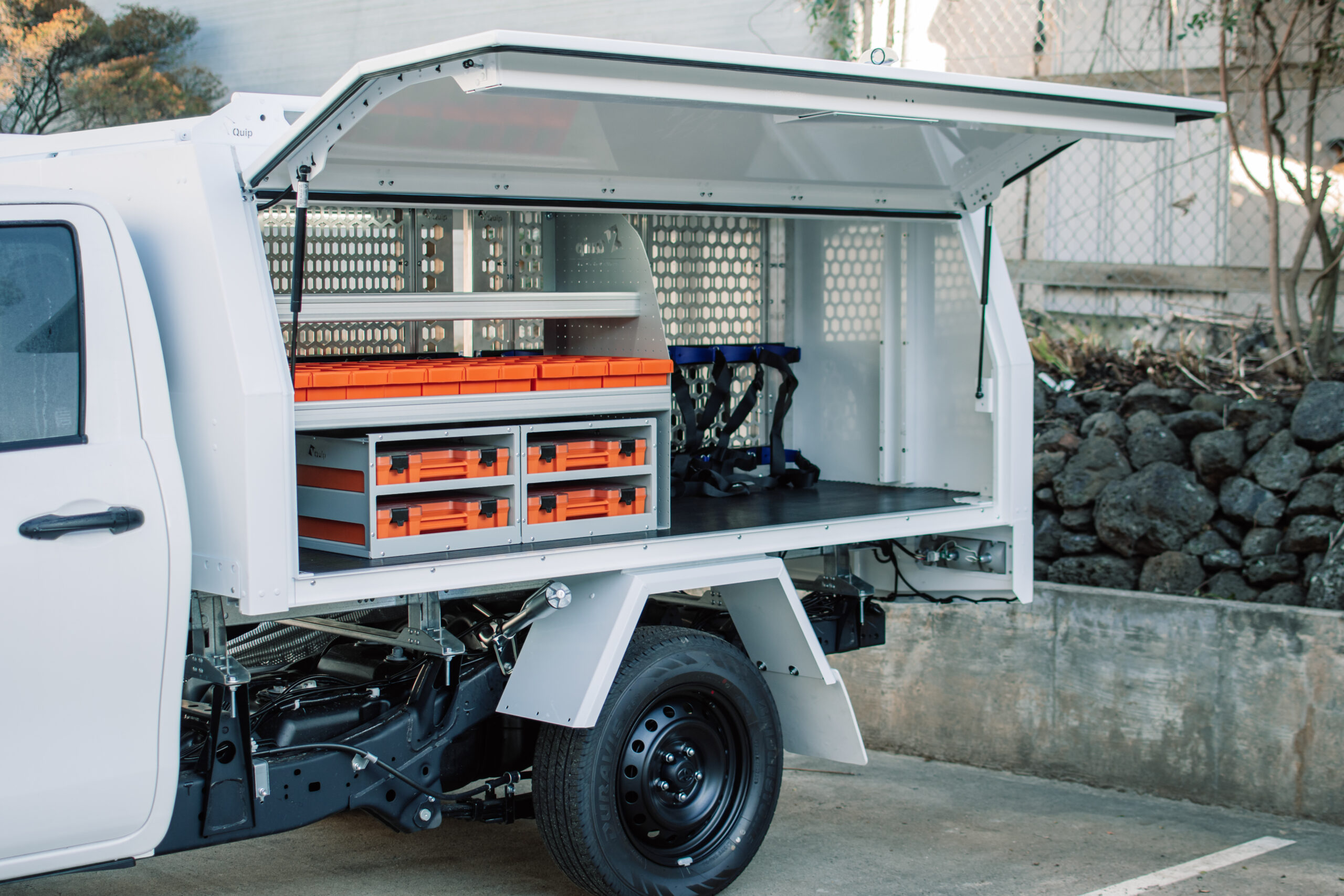
10 Things to Consider Before Starting a Vehicle Fitout
Jan 2, 2025
A custom vehicle fitout can be a game-changer for businesses and tradespeople, enhancing productivity, organisation, and professionalism. However, a poorly planned fitout can lead to wasted money, inefficiencies, and frustration. To help you make the most of your investment, here are 10 key factors to consider before starting a vehicle fitout.
-
Understand Your Industry Needs
Different industries have unique requirements when it comes to vehicle fitouts. A plumber might need secure storage for pipes and fittings, while an electrician may prioritise cable management and compartments for small tools. Start by analysing your daily tasks and workflows to identify essential features for your fitout. Tailoring the design to your industry ensures that your vehicle supports your work instead of hindering it.
For example, carpenters might benefit from hardwood ply drawers for tool storage and mesh wall panels to secure bulky items. Couriers, on the other hand, may prioritise lightweight shelving and easy access to parcels. Understanding these nuances is critical to making the right design choices.
-
Set a Realistic Budget
A well-designed fitout is an investment, but it’s crucial to align it with your budget. Begin by determining how much you can afford to spend and prioritise the most essential features. Remember to factor in the costs of materials, installation, and any additional accessories. While it may be tempting to cut corners, investing in durable, high-quality components can save you money in the long run by reducing maintenance and replacement costs.
Consider creating a tiered budget: one for must-haves and another for optional extras. This approach allows you to plan for upgrades later if needed. Speak with fitout professionals to get accurate quotes and avoid unexpected expenses.
-
Choose the Right Vehicle
The type of vehicle you’re fitting out plays a significant role in the design process. Consider the size, payload capacity, and configuration of your van or ute. If you’re purchasing a new vehicle specifically for a fitout, think about future scalability and whether the vehicle’s specifications align with your long-term business needs.
Research the market to find vehicles that are popular in your industry. For instance, some vans offer better fuel efficiency or higher payload limits, which can influence your decision. Make sure your vehicle choice complements your fitout’s design and purpose.
-
Plan for Future Scalability
Your business may grow, and your fitout should be able to grow with it. Design a layout that allows for flexibility, such as modular shelving systems or additional storage space for future tools and equipment. This forward-thinking approach ensures that your fitout remains relevant as your needs evolve.
Think about potential changes in your workload or services. Will you need to carry more tools or larger equipment in the future? By anticipating these changes, you can save yourself the hassle and expense of a complete redesign later on.
-
Consider Weight Distribution and GVM Compliance
Overloading your vehicle can lead to fines, increased wear and tear, and safety issues. Ensure that your fitout complies with your vehicle’s Gross Vehicle Mass (GVM) limits. Proper weight distribution is also critical for safe handling and braking. Work with experienced fitout professionals who understand these regulations and can design a layout that keeps your vehicle roadworthy and safe.
In addition to complying with GVM, consider the impact of weight on fuel efficiency. Overloading not only compromises safety but also increases running costs. A balanced, lightweight fitout can make a big difference.
-
Focus on Organisation and Accessibility
An effective fitout minimises wasted time by making tools and equipment easily accessible. Think about how you can organise your vehicle to reduce clutter and improve efficiency. Features like pull-out drawers, labelled compartments, and strategically placed shelving can save you valuable time on the job. Additionally, ensure that frequently used items are within easy reach to minimise physical strain.
Use dividers, bins, and colour-coded labels to further enhance organisation. Small details, like having a designated space for every tool, can significantly improve your workflow and reduce frustration.
-
Prioritise Durability and Quality
Your vehicle fitout needs to withstand daily wear and tear, especially if you’re working in demanding environments. Invest in materials and components that are durable and designed for heavy-duty use, such as hardwood ply, aluminium, or high-quality steel. While these materials may have a higher upfront cost, they provide long-term value by reducing the need for repairs and replacements.
Testimonial stories or case studies can often highlight the benefits of quality materials. For instance, a tradesperson who invested in durable shelving might avoid costly replacements after years of use, reinforcing the value of this consideration.
-
Incorporate Safety Features
Safety should be a top priority when designing your fitout. Include features like secure tool storage to prevent items from shifting during transit, tie-down points for bulky equipment, and non-slip surfaces. If you’re carrying hazardous materials, ensure that your fitout includes proper ventilation and complies with relevant safety regulations.
Think beyond immediate safety concerns. For instance, ergonomic designs can reduce the risk of long-term injuries from repetitive strain or heavy lifting. Discuss these considerations with your fitout provider to ensure a safe and efficient setup.
-
Think About Aesthetics and Branding
Your vehicle is a mobile billboard for your business. A professional and well-organised fitout not only improves functionality but also enhances your company’s image. Consider incorporating branding elements, such as decals or paintwork, to make your vehicle stand out. An organised and visually appealing fitout can leave a positive impression on clients and reflect your professionalism.
Clients often judge your business by appearances, and a tidy, branded vehicle can be a key differentiator. Ensure that your branding aligns with your overall marketing strategy for consistency.
-
Work with Experts
While DIY fitouts may seem cost-effective, they often lead to subpar results and compliance issues. Working with a professional fitout provider, like VQuip, ensures that your fitout is tailored to your needs, complies with regulations, and meets high-quality standards. Professionals can also provide valuable insights and recommendations that you might overlook, saving you time and money in the long run.
Research potential providers thoroughly. Look for reviews, testimonials, and examples of past projects to ensure you’re partnering with a trusted expert. An experienced team will prioritise your needs and guide you through the entire process.
Conclusion
A well-thought-out vehicle fitout is more than just a convenience; it’s a strategic investment that can boost your productivity, enhance your brand, and support the growth of your business. By considering factors such as industry needs, budget, scalability, and safety, you can create a fitout that meets your current requirements while preparing you for future challenges. For expert advice and custom fitout solutions, contact VQuip today and let us help you transform your work vehicle into a productivity powerhouse.
By carefully addressing these 10 considerations, you can ensure that your vehicle fitout becomes an asset to your business, helping you work smarter, not harder.





